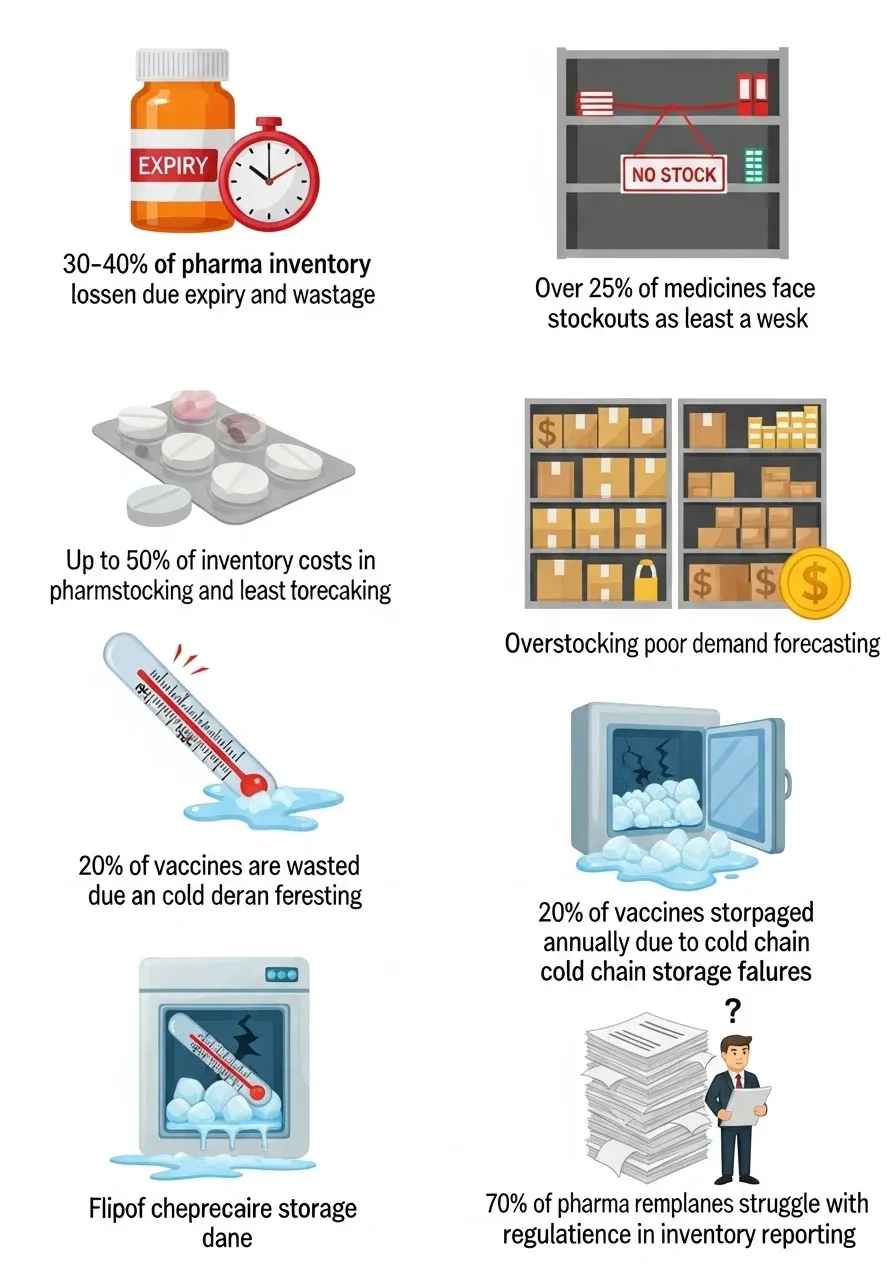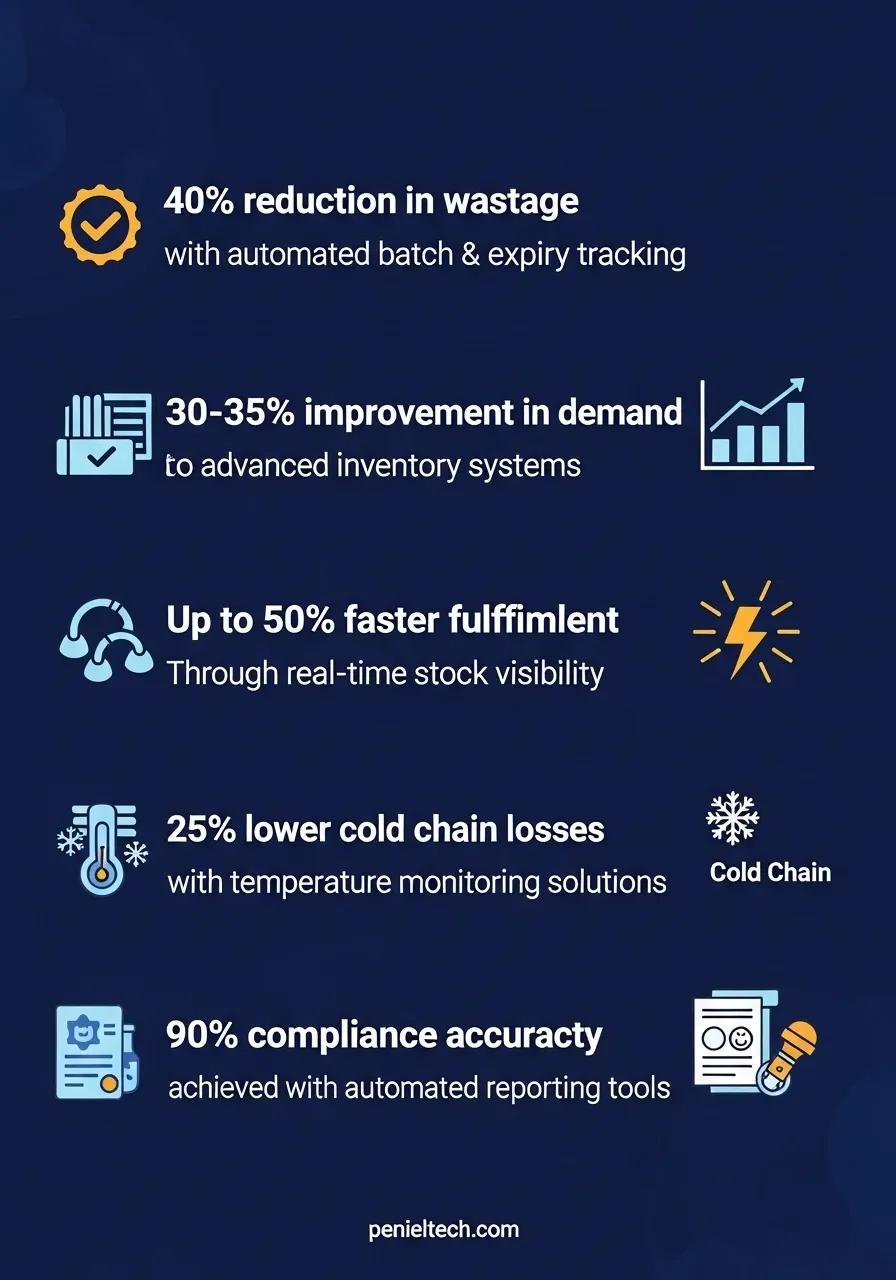Inventory Challenges Faced by Pharma Companies
It’s not been long, and the entire world witnessed the terror of the COVID-19 pandemic. While some industries experienced outstanding profit and others went through a huge setback, the world pharmaceutical industry endured both.

From 2014 to August 2020, the global purchase of units was between 217.4 billion and 304.6 billion per month. Even before the pandemic situation, the medicine purchase rate was 3990 to 4760 units per 100 people monthly. In total, the number was between 217.4 and 271.0 billion.
By March 2020, when the global pandemic was declared, the purchase rate of drugs reached 5309.3 units per 100 people, which means a total of 304.6 billion units. Basically, it increased by a solid 15.1% from March 2019.
Here, the setback was the increasing demand. During the period, when nothing was available, and farms primarily focused on inventing new medicines for the pandemic, the demand for existing drugs was making the industry out of stock immediately. People were suffering, and pharma companies tried hard to find reliable solutions.
Now that the fear of the pandemic has gone, managing inventory in the pharmaceutical industry is still far from simple. Compared to other manufacturing sectors, pharma companies handle a unique mix of challenges because medicines and healthcare products are more than just commodities. They are the critical items that must be safe, reliable, and compliant with strict regulations. So, it’s true that inventory optimization is one of the biggest struggles for pharma companies, but challenges don’t mean failure. With the proper balance of process and technology, there are always ways to manage pharma inventory.
Struggling with Expiry & Wastage?
Track batch & expiry dates to reduce medicine losses.
The Unique Nature of Pharma Inventory
Pharmaceutical inventory is far different than other warehouses. Here, the clock starts ticking once something is manufactured. If we talk about clothing retailers, they can discount excess stock or store items for a longer duration using an Inventory management software, but pharma items come with complexities like:
- In the pharma industry, timing is critical because medicines expire quickly.
- There are certain cold-chain drugs that require constant temperature monitoring.
- Every box must be traceable by batch and lot numbers for safety and regulatory compliance.
- Some controlled substances fall under strict security and legal restriction categories.
- Sometimes demand can be influenced by sudden outbreaks, seasonal demands, and new regulations.
Here are a few realities that make pharma supply chain management harder than most:
Key Inventory Challenges Faced by Pharma Companies
1. Expiry Management and Product Wastage
Medicines have a defined shelf life and sometimes are shorter than other goods. Sometimes, pharma companies end up stocking large quantities that may expire before use.
Solution:
- Look for a barcode inventory system or RFID tagging for instant expiry tracking.
- Implement automation for stock management to prioritize FEFO (First-expiry-first-out) processes.
- Audit your shelves regularly by using an inventory tracking system instead of manual checks.
2. Regulatory Compliance and Traceability
Pharma companies across the globe are under strict oversight from authorities. Here, every tablet, vaccine, or vial must always be traceable.
For example, EDE, aka the Emirates Drug Establishment, is the pharmaceutical compliance government body in the UAE. They introduced Federal Law No. 38 of 2024 to regulate all medical and pharmaceutical products here. In this scenario, manual processes can lead to reputation loss, penalties, or even license issues due to compliance errors.
The Solution:
- Use an ERP inventory module that integrates compliance documentation with inventory records.
- Always make sure your system supports batch and lot tracking.
- Besides, use cloud inventory systems to store years of records securely for audits.
Stockouts Impacting Sales?
Get real-time inventory insights to avoid shortages.
3. Demand Forecasting and Sudden Market Shifts
The pharmaceutical industry is completely unpredictable. Sudden outbreaks like COVID-19, seasonal flu, or any new treatment guidelines can lead to immediate changes in the market.
The Solution:
- Implement an inventory management system to analyze old sales.
- Connect your supply chain management system with current demand signals.
- Use AI-driven forecasting features in a modern warehouse management system to respond to sudden spikes.
4. Complex Storage Conditions
Vaccines, injectables, and biologics are very fragile, and they can’t be stored at room temperature because it may lead to huge risks like wastage and compliance failures.
The Solution:
- Integrate your Inventory management solutions with IoT sensors to monitor temperature and humidity.
- This integration will provide you with instant alerts if conditions go beyond the safe range.
5. Counterfeit Products and Security Issues
There is a major risk in the pharmaceutical industry, and that’s counterfeit products. Apart from causing revenue loss, it also drastically damages brand trust. The key concern is that these kinds of products are extremely dangerous for patients. Unfortunately, it’s almost impossible to spot them without a proper inventory tracking system.
The Solution:
- Deploy a serial number tracking system to validate every product.
- Introduce secure access control in yourwarehouse systems and prevent unauthorized handling.
- Link each item with a digital record in yourinventory management software.

6. High Operating Costs
It’s never easy to manage pharmaceutical inventory. It is highly expensive with specialized storage, cold rooms, and compliance checks.
The Solution:
- Shift to a cloud inventory system that can centralize operations and cut IT maintenance costs.
- Use an automated stock management process to reduce manual labor in counting, recording, and reporting.
- Regularly analyze inventory reports. It helps to identify dead stock and optimize purchasing.
Right Strategy to Overcome Pharma Inventory Challenges
As mentioned earlier, you can seamlessly avoid the above problems with a proper stock control software. But that’s not the only answer; you also need to focus on:
Standardizing Processes: Map your every step from procurement to distribution. It’ll ensure all stakeholders follow the same standard operating procedures.
Training Employees: If your employees lack knowledge about using the software properly, then even the best inventory management software can do nothing. So train your employees in the right way.
Choose a Trustworthy Technology Provider: Some companies still rely on multiple tools without realizing that it’s not helping anymore. Choose a software provider who can assist you with the best integrated or customizable ERP inventory module for pharmaceuticals.
Compliance Getting Complex?
Automate reporting & stay aligned with pharma regulations.
Overall, inventory control software is the best deal to safeguard patient trust, meet regulatory demands, and run every operation smoothly at the same time. The right combination of inventory control modules can ease even the most complex pharmaceutical challenges.
